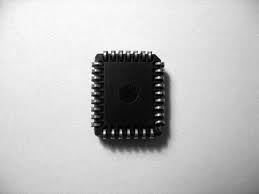User:Cocanower1
Computer: The Beginning of The End (of my sanity)[edit | edit source]
a project by Michael Bandemer, Joee Mitchell, and Aaron Kelker
Parts of the Computer[edit | edit source]
BIOS[edit | edit source]
The BIOS or Basic Input/Output System, is one of the most important part of your computer. When your computer starts up, it needs to start the OS (operating system), but can't start it from the hard drive. So, the BIOS allows the computer to start up the OS. The BIOS does a few simple, but major functions and will sometimes have its own ROM. The BIOS also recognizes the connections to other parts of the computer.
Graphics Card[edit | edit source]
The Graphics Card is a peice of hardware that processes visual input/output and displays it as pixels on the monitor. A graphics card tends to take up a lot of memory, so many have their own memory installed into them. The graphics card translates visual information into pixels that appear on your monitor screen.
Keyboard[edit | edit source]
A keyboard is a series of switches that allows the user to give the computer information or direction. It is connected directly to the CPU. There have been many keyboards over the years, different ones for different operating systems. In 1986, IBM decided to not only make keyboards allow users to input data, but to give certain keys specific functions and controls, such as the arrow keys or the F1-F12 keys.
Main Memory (RAM (Random Access Memory))[edit | edit source]
RAM is the hardware that is in charge of most of your main functions. Its setup allows it to quickly access any information as long as it knows where the information was stored. This is faster than the hard drive as the hard drive has to search for information. RAM is essential for the internet and gaming.
Power Supply[edit | edit source]
The power supply unit, or PSU is what draws and gives power to your computer. It changes the power from your wall socket or battery from an AC current to a DC current. It also regulates the flow of energy to help prevent damaging power surges, but it won't always succeed.
CPU (central processing unit)[edit | edit source]
The CPU is what makes the computer a computer. It does all the processing of information within the computer and seen by many as the most important part of the computer. The CPU is housed in a microprocessor, which is just a single chip. Modern CPUs come with heat sinks and a small fan to prevent overheating.
HDD (hard disk drive)[edit | edit source]
the HDD is the main data storage device of the computer. Often called the C: drive, this is where most data that is stored on the computer is stored.
Monitor[edit | edit source]
The display screen of the computer. It's purpose is to allow the user to see and easily interact with the computer. It works with the graphics card to create images via pixels. There are a few types of monitors, such as monochrome, with only two colors, or color monitors, where every color is made and displayed on screen.
How it all works together[edit | edit source]
Upon start-up, the power supply draws electricity from a source, such as a wall socket. It changes the AC current to a DC current and supplies every part of the computer with power. The power reaches the BIOS which boots up the OS so that the CPU can start to interact with the rest of the computer. Once the computer boots up, the user can start using the keyboard to send commands. Press a few buttons, causing the switches underneath the buttons to go off and send information to the CPU. The command is to pull up an old Word document, so the CPU gives the RAM the location of the document and the RAM pulls it out from the HDD. Then the graphics card translates the information into pixels which are then displayed on the monitor as a document of words so that the user can read it.
Sources[edit | edit source]
"What Is Power Supply? - A Word Definition From the Webopedia Computer Dictionary." Webopedia: Online Computer Dictionary for Computer and Internet Terms and Definitions. 12 May 2009. Web. 25 Aug. 2010. <http://www.webopedia.com/TERM/p/power_supply.html>.
Tyson, Jeff. "HowStuffWorks "How BIOS Works"" Howstuffworks "Computer" Web. 25 Aug. 2010. <http://computer.howstuffworks.com/bios.htm>.
"What Is CPU? - A Word Definition From the Webopedia Computer Dictionary." Webopedia: Online Computer Dictionary for Computer and Internet Terms and Definitions. 06 Jan. 2010. Web. 25 Aug. 2010. <http://www.webopedia.com/TERM/C/CPU.html>.
What Is RAM? - A Word Definition From the Webopedia Computer Dictionary." Webopedia: Online Computer Dictionary for Computer and Internet Terms and Definitions. 25 Oct. 2009. Web. 25 Aug. 2010. <http://www.webopedia.com/TERM/R/ram.html>.
Tyson, Jeff, and Tracy V. Wilson. "HowStuffWorks "How Graphics Cards Work"" Howstuffworks "Computer" Web. 27 Aug. 2010. <http://computer.howstuffworks.com/graphics-card.htm>.
"What Is Monitor? - A Word Definition From the Webopedia Computer Dictionary." Webopedia: Online Computer Dictionary for Computer and Internet Terms and Definitions. 20 Sept. 2004. Web. 27 Aug. 2010. <http://www.webopedia.com/TERM/M/monitor.html>.
Wilson, Tracy V., and Jeff Tyson. "HowStuffWorks "How Computer Keyboards Work"" Howstuffworks "Computer" Web. 27 Aug. 2010. <http://computer.howstuffworks.com/keyboard2.htm>.


